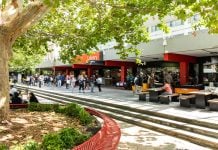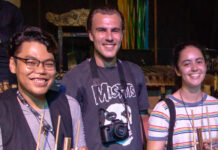Ever walked past those colourful helix statues and wondered what’s happening inside the labs of the La Trobe Institute of Molecular Science? This series highlights the ground-breaking research happening on the top floors of our very own LIMS building, as well as revealing the stories of the staff and students behind the discoveries.
This week, MyLaTrobe’s Lakshmi Ganapathy speaks to Professor Stephanie Gras from the Department of Biochemistry and Genetics, whose lab looks at viral recognition (most recently COVID-19) in the human body.
Tell us about your journey to LIMS.
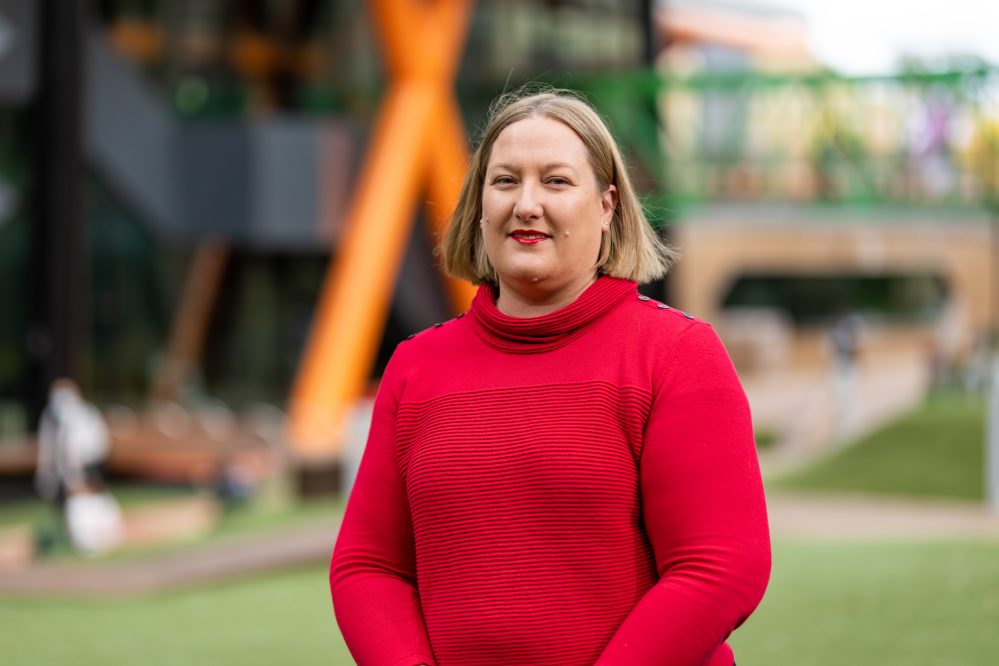
[I did] my PhD in France, in X-Ray Crystallography, to try to understand how proteins are shaped and their 3D structures, which can help us understand their function…Trying to understand how our body fights viruses, that’s my [life’s] passion since [my] undergrad…They’re tiny, but they’re just so well equipped to do their job…and like we’ve seen last year, [they can have an] absolutely disastrous impact on our life. So, understanding how our body is able to recognise viruses and when things don’t quite work well, how we can actually help…that’s my goal in life.
The journey was doing a post doc at Monash… [where I] got my own group. I decided to have my own lab, still working on viral immunity and structural biology. Then last year, I got the opportunity to meet with some people at LIMS…Science is a very small world and [everyone] who works in X-Ray crystallography and structural biology in Australia [pretty much] knows each other.
So, I knew a few people from LIMS. I came in, had a chat and they had an open position for Professor, a female researcher. I decided to apply because I got along very well with everyone I met and everyone was really welcoming.
It’s a dynamic group. It’s a fairly young institute… [I’d] done 14 years at Monash – great place, but I felt like it was time to actually see something different. That’s something I really like about La Trobe; access to the regional campuses.
That’s something I love too – how La Trobe encourages people who don’t always have access to university, like first-in-family and those living regionally.
In France education is a right; everybody can go to uni [and] uni’s free. [Education’s] something that I find very important for [young people] to have access to…I really believe everyone should have that opportunity. It’s hard for students to become what they can’t see; science unfortunately is done in labs, and if you don’t have access to [a] lab, it’s really hard to become a scientist. I hope when COVID restrictions are lifted, we can actually go and meet people [regionally]…[and] encourage them to think about science as a career choice.
I’m the only one in my family who did a PhD. So yeah, that’s something really important for me, [the chance] to impact someone else’s life and give opportunit[ies] to students.
So what’s an average day in LIMS look like for you?
So, me personally, [I don’t do] much lab work anymore…saying that, I was in the lab two days ago to freeze crystals. I actually had to put my lab coat on, which is fun; unfortunately for me as a lab head [this] doesn’t happen every day!
Every morning at 9:30am we’ve got a short 15-minute standard meeting, like corporates will do…Everybody tells us what they’ve done yesterday, what they’re going to do today…it’s good to see everyone…we’ve been quite isolated with working from home…
Some days [are] less busy, some days [are] more busy and people might need help…[I’ll] go and help or see the results and we troubleshoot together. Unfortunately, science is 90 percent fail[ure] and 10 percent success…funnily enough, the 10 percent success keeps us going, which, you know – call us mad people! But sometimes it’s about not how many times you fail, but how many times you’re able to go back and have new ideas and try again.
Before COVID we’d try to have social interaction as well… [like for] birthdays. On Fridays we had lab meetings, so before COVID someone [would] give a talk and show their results and someone would be in charge [of bringing] food. My lab has a lot of people coming from very different backgrounds, which is awesome for food because [somebody’ll] bring something yummy each time!
The days in the lab, they’re never nine to five – you could start earlier, you could start later…it’s very different from one day to another, which I find really interesting. I would not like to have [a] nine to five kind of office desk [job]. I think I’d be crazy quite quickly!
What’s it like working in that environment?
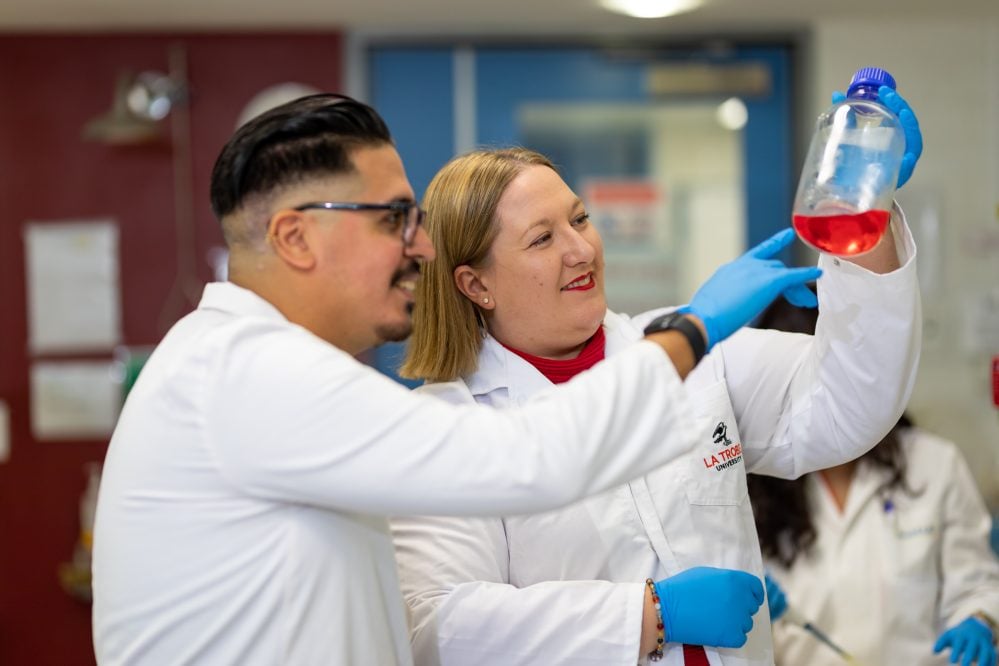
Well, the people are really, really welcoming. I think that’s something that was quite striking when [I] first join[ed]; even with the limitation of not being able to have large gathering[s], you could really feel the collegial type of spirit, and that’s been great. It seems like [everybody] from the undergrad student to the professor is on the same level. Everybody is helping each other.
The thing is, with academia and with science, you have a high level of freedom. If you want to be creative and think outside the box, find something that no one else find[s], you really need to have that kind of freedom. You need to have the creative space around you, you have to be free to spend time to explore and think very carefully.
That’s something I’ve seen with students – if you give them that freedom, some of them just come up with wicked ideas. Not all of them will work, but having an idea that’s completely outside the box, for a student, is absolutely amazing.
Seeing them com[e] into the lab…being very shy, by the time they leave the lab, they want to do science and they’re so excited about it. They start opening up…for us, because the students are very young, we see them growing up very quickly. Within six months’ time in the lab, they’re [a] different person. [When] most of the students keep on doing research or science…it’s really great for us. [It means] we’ve been able to communicate our passion for science.
Sounds like you have some wonderful interactions with students?
So there’s the SHE3FRW placement program at La Trobe welcoming third year students [into] placements in labs or in industry, to try to understand [the] work environment…at the moment we’ve got four students in our lab. We interview the students, which I know is always quite scary for [them]; we ask them to give us a CV and [their academic] transcript, and after [that] we ha[ve] a quick chat with the student to try to understand what the student wants to do…
This year we saw some students [who] were not very convinced that research [was for them]. I think one of the reasons [for this] is that if you were first year [or] second year last year, you didn’t get into labs – you didn’t have pracs, everything [was] on zoom.
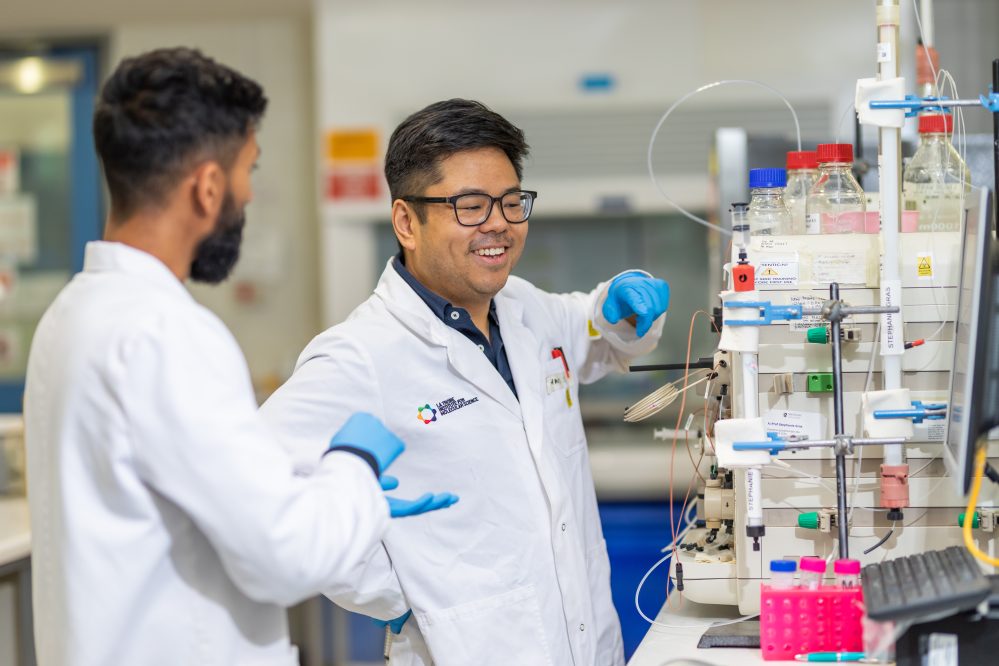
That’s not how you can do science…if you can’t see the lab, you’re not going to like science. As much as all the teachers have been doing an amazing job…putting everything online, it’s not the same. It will never be the same, it’s just not possible – but to get the students in[to] the lab, [to] see them understanding [the] stuff they learn…All [of] the sudden they’re seeing it and, in their eyes, you see the light, that ‘ah’ moment. It’s something that is amazing.
Now they’ve [spent] two or three months with us in the lab and most of them want to do [a] PhD…We had students that came last year to do this summer scholarship with us that never thought they could do Honours, because some people told them it was just not for them. To give them the opportunity and tell them that the sky is the limit…when you’re 20, 22, you should not be told that you can’t do this or that. It’s just the beginning and anything is possible. Just [have] some confidence. Go and talk to people and just make it happen. Don’t take no [for an answer].
What’s one thing you wish more people know about LIMS, or science in general?
I know it’s really difficult for scientists to go out in the public and in the media and publicise our research, because talking in lay language, it’s a very technical thing for us to do, and most of us are scared of it to be fairly honest.
I always say to my husband, ‘oh, this is complicated because it’s science’ and [he’s] like, ‘you can’t say that to people, because you’re tell[ing] people they’re not clever!’ It’s not that people are not clever – it’s that for us to break it down into something that everybody has access to is a real exercise in itself… We have that fine line – you want to give the message, but you want to stay specific in what you’re saying and not say anything that is not true.
Speaking of breaking down the science, can you tell us about your research?
So, the lab is looking at how your immune system can recognise parts of viruses. When you get an infection, the virus is going to break down into small pieces. Those small pieces are the one that we’re looking for and trying to understand – which pieces are the right ones to stimulate a very strong and protect[ive] immune response, because that’s [what the] vaccine would target.
Something we found since working on SARS-CoV-2 is that as coronaviruses are not new; when we catch the common cold during the winter, [sometimes it’s] because you’ve been affected with what we call seasonal coronaviruses.
So, coronaviruses, you’ve got the bad guy, [like] SARS-CoV-2, SARS, MERS, and the good guy, which only gives you a bit of a cold. When the viruses are getting br[oken] down into small pieces, some of those small pieces are actually the same between seasonal coronaviruses [which] give you [the] common cold, and SARS-CoV-2 [which] gives you COVID.
We wanted to understand…whether or not people who’ve never been in contact with SARS-CoV-2…if they could actually recognise the virus and be, in a way, naturally protected. We found that some specific parts [of seasonal coronaviruses] in some people who’d never been infected with SARS-CoV-2 [could be] recognised by the immune system, which means that some individuals will have [a] natural advantage against the virus.
That’s so interesting! What does it mean for how we treat COVID-19?
One good thing is understand[ing] why some people were asymptomatic when they ca[ught] the virus, and why some of them [were] not, because if you can actually understand those things, you’ve a better chance [at predicting who’s] susceptible [to] a severe form of COVID.
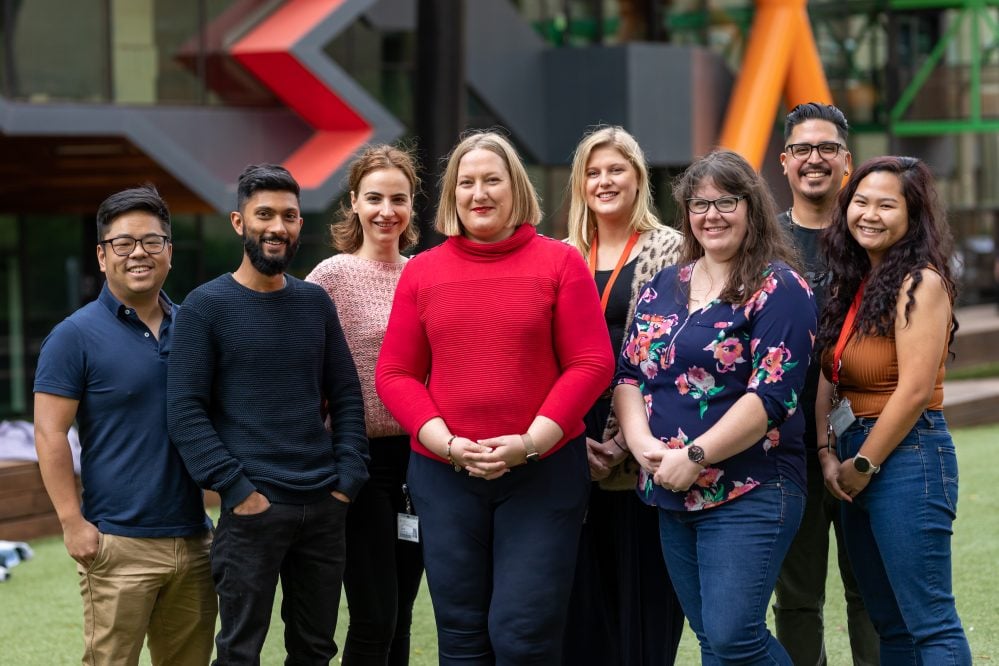
And if that’s the case, we can think on the track of, you know…having booster shots for the vaccine, so if you are more susceptible [to] having severe COVID, maybe it’s a good thing for [you] to have a booster shot as well.
If we can find what kind of marker we ha[ve] to look for to know who is more at risk and not, [it helps us] to follow people once they catch COVID…we might be able to give them some prevent[ative] drugs as well to avoid [having] them end up in hospital.
It’s really about understanding which part of the virus is actually stimulating the human response, because when we think about all the variants…if the important part of the virus that is stimulating our killer cells is the one [which starts] mutating, it might actually escape from the surveillance of our immune system.
It’s amazing how quickly we’ve gone from not having heard of COVID to having a vaccine!
We see a lot of people having some doubt about how fast the vaccine has been developed; it’s important to [notice] that coronaviruses are not new…a lot of work [was] done with SARS back in 2003.
Also, the quantity of people that [are working] on COVID in the world is mind blowing…from pharmaceutical companies [to] public labs in academia. The way we do science has been completely transformed with COVID, because everybody has been trying to fight a common enemy, putting all the resources together, putting the data out in the public as quickly as possible.
I think something people might not realise is that each time there is a new vaccine…it’s not just one lab publishing that data and getting approval, it’s the whole scientific community looking very carefully at all the data, so approval for vaccination is very strict. In Europe, in the US, in Australia, the way vaccines are getting approved is so regulated that people should be extremely confident in the efficacy and safety of vaccines.
That’s reassuring advice. Finally, what’s next for your lab?
We’re looking at before and after vaccination…what’s the baseline? …Between the 1st and the 2nd dose, what’s the difference, and how much of a boost [is] the immune system getting from the second dose…
We’ve put [out] a call to recruit people. So, if any of the students [reading are] vaccinated, or if they know anyone that’s recovered from COVID, they can also contact us to take part in our study; you just need to be over 18, but besides that we don’t have any restrictions quite yet.
We’ve had a lot of people [interested]…a lot are students and staff that have volunteered to participate…which means we’ve got a very good representation of the population as well, so that that’s been amazing. Like I said, it’s a workplace environment where people are always happy to help!
People want to know…everybody is concerned about the vaccine, and I’ve been able to discuss [it] with a lot of people, try to put their mind as at ease…We can [help] people [decide] whether or not they want to get vaccinated, with all the knowledge they should have to [m]ake that decision. I think that’s really important as well.








